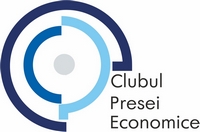The pharmaceutical business has never been as stormy as it was in 2020. After the bread winter (+20%), there was a hungry spring (-50%), when sales fell to the «point of no return». Everything was streamlined in June: pharmacy retail turnover jumped by almost a third, as a result, the market closed the first half of the year with a noticeable increase.
The Association of Foreign Drug Manufacturers in Moldova (APIM) informed Logos Press that in money terms the market grew by 3.7%. In physical terms (in packages), it decreased insignificantly by 2.3%. There was a bias in demand in favor of antiviral drugs and immunostimulants, as a result of which the rest of the assortment suffered.
According to analytical data provided by Pharmaceutical Marketing Group, the turnover of pharmaceutical retail amounted to 87 million euros in the first half of the year. This is €3 million more compared to the same period of 2019. In total, Moldovan pharmacies sold 33 million packages of medicines — 600 thousand less than in the first six months of last year.
This year there were structural changes in the top ten market players. Thus, the first three lines are traditionally held by Gedeon Richter (6.6% of the market), Berlin-Chemie Menarini Int (5.9%) and KRKA (5.1%). They account for up to $20 mln of retail turnover.
The fourth place is occupied by «World Medicine», which has 2.7% of the market. Takeda dropped out of the top 5: last year it closed its representative office in Moldova, as a result, the company slipped to the tenth place, and its market share decreased to 1.8%. This place was unexpectedly taken by Bayer (2.2%), whose sales for six months increased to $2.1 million. One of the reasons is that the company’s portfolio included a very popular drug Xarelto, which generated a turnover of almost half a million dollars ($476 thousand) between January and July.
Sanofi moved up one point with a 2.1% market share. Moldovan Balkan Pharmaceuticals moved up to rank eight for the first time, having gained 2% of the market. Two years ago this manufacturer ranked 16th in the overall ranking, and last year it showed a 33% growth. In the first half of this year, its sales grew by another 12% to $2 mln. And this is only in pharmacy retail, excluding supplies to the hospital sector, where Balkan Pharmaceuticals is the largest supplier.
Turkey’s Bilim-Pharm and Japan’s Takeda round out the top 10 with 1.9% and 1.8% of the market, respectively.
Four suppliers have reduced their volumes since the beginning of 2020. World Medicine had the biggest drop for six months — minus 20%. At Takeda it was minus 15%, at Sanofi — 5.5%, at Bilim-Pharm — 1.5%. The rest showed growth from 4% to 7%.
The pharmacy segment had insignificant losses. There are still about 1.2 thousand pharmacies in the country, with 768 belonging to pharmaceutical chains, which are annually enlarged.
In Moldova there is a paradoxical situation when wholesale and retail are concentrated in the hands of importers. In fact, these are two heads of one body, because the law on pharmaceutical activity prohibits wholesalers to engage in retail and vice versa. But when importers faced sales problems (and especially delays in payments), they created their subsidiary retail structures, which allows them to vary their overall markup.
And it cannot exceed 40% in the price structure. At the same time, pharmacies have a differentiated trade mark-up for medicines from 11% to 25%, depending on the manufacturer’s price. The wholesaler’s markup is from 5% to 15%. By controlling both wholesale and retail, the importer has gained access to «live money», which he directs to his pharmacy business.
As a result, there are now eight pharmacy chains on the market, six of which belong to wholesale companies.
Dita Estfarm’s Farmacia Familiei is leading by a large margin, with 182 pharmacies. Tetis International has 141 Hippocrates pharmacies, Felicia has 118, Vinamex has 79 Orient outlets and Becor has 77 Elody outlets. «RihPanGalPharm» opened 39 «Gedeon Richter» pharmacies. «Tri V Farm has 41 pharmacies, including Mama. Peon-Farm is actively developing: its Peon network has 66 pharmacies located all over the country.
Under such an onslaught, single out-of-network pharmacies are the worst hit. Their turnover does not exceed 100 thousand lei per month, which does not allow them to count on a wholesale discount or deferred payment. As a result, these structures are willing to change the signboard: it is easier for them to merge with the network, receiving royalties, than to try to survive alone. Given that single pharmacies occupy about 35% of the market, networks have a reserve for growth. They absorb existing companies without wasting time and money on launching new outlets.
A paradox is occurring: while the number of population is decreasing to 2.6 million people (fresh NBS data), the share of pharmaceutical business is growing. Today there are 2.2 thousand people per one pharmacy. This figure is higher only in Ukraine, where one pharmacy serves 2.5 thousand people. In other European countries, a pharmacy covers 3.5-4 thousand people.
The Ministry of Health believes that it’s all about hype demand, which is fueled by the retailers themselves. At its suggestion, the Agency for Medicines for the first time in ten years analyzed the situation. The first thing that was revealed was that the market has narrowed by 43%. Thus, if in 2013 the National Price Catalog contained 6.2 thousand drug names, by the beginning of 2020 their number had decreased to 2.6 thousand.
The second problem is to reduce the number of competitors for each international trademark to 1-2 manufacturers. And this is a direct path to shortages in case one of the suppliers leaves the market.
But most importantly, the pricing structure blurs the link between the producer price, wholesale price, maximum retail price and the fixed amount compensated by the NCMC. I.e. there is no transparency in the formation of the price list. As a result, the Agency proposed to replace the Price Catalog with the National Catalog of Maximum Prices, as the current register does not reflect real commercial mark-ups.
The proposal was taken «on the pencil». But given the frequent changes in the Agency’s management, it is unlikely to be implemented before the end of this year.
Irina MATENKO, Economicheskoe Obozrenie «Logos Press»

